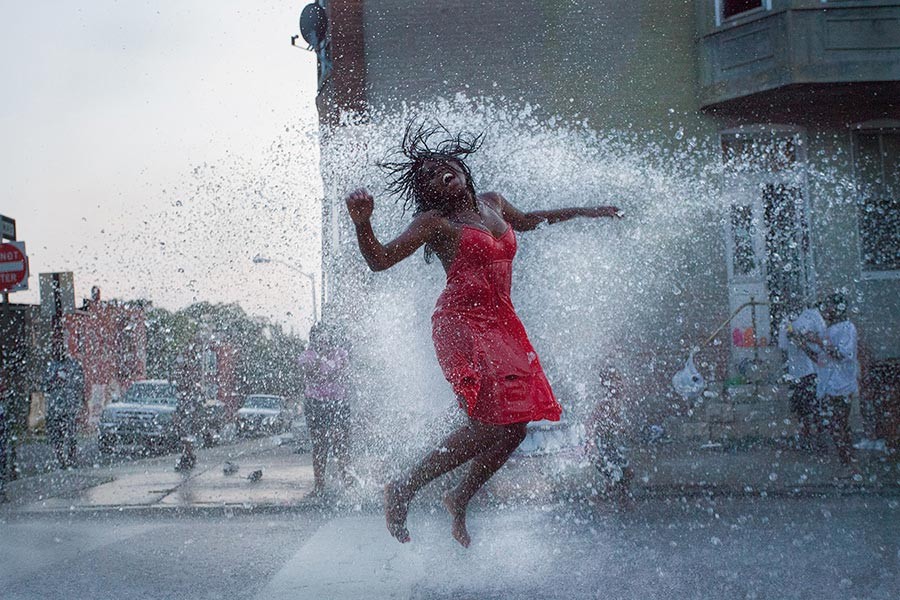I grew up with a father who, after the Second World War, trained as a painter and sculptor. When I was a boy, he would take me to art shows and slide shows and point out what he saw with his painter's eye: figure and ground, shapes and lines and curves, the quality of light, how this color projected and that one receded, why one picture was good and another was less so. I didn't know it then, but I was getting a valuable seminar on composition and how to see. All of it tuition-free.
His present to me for my high school graduation was a 35mm camera, and I've been shooting pictures ever since. In part to earn his approval, I always wanted to be good at it, and that meant paying close attention to fine photographers, something I've been doing for 45 years now. I never tire of looking at great pictures.
How could anyone tire of looking at the sort of work presented here? Johns Hopkins alumni Jennifer Bishop, A&S '79; Coos Hamburger, A&S '87; and Joe Rubino, A&S '73 (MA), have spent decades refining their vision, in every sense of the word. The consistent quality of their images testifies to their dedication to craft, and the distinctiveness of their work testifies to their artistry. Spending hours with them talking about pictures and cameras and light and color was great fun.
For this feature, we asked them to select one image from their body of work that holds special meaning for them. We also asked them to shoot portraits of each other; good sports one and all, they dove into that assignment and seemed to thoroughly enjoy themselves. They've each created a slide show so you can experience more of their work. I urge you to have a look—it's a visual feast.
Jennifer Bishop
When I came to Hopkins, it was for the Writing Seminars. I wanted to tell stories. But I think I got drawn to shooting pictures on the streets as an easier way to tell stories. Way easier than writing.
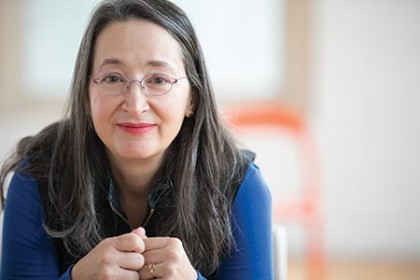
Image credit: Joe Rubino
Taking pictures was my freedom. It's what I got to do when I didn't have to do something that was work. Combing the streets, dragging around the neighborhoods, and just being fascinated by the people and the scenes that I saw. The thrill of gaining access to places was big. That was my ticket to being nosy.
It's harder to get spontaneity now. People all have cellphones, they're all taking each other's picture. They immediately strike a pose. And people turn me down much more now because they're savvier about the power of images, and why should they give up their likeness? I've always respected that. But I miss the days when everyone was sort of naive about pictures, or didn't care.
Anything that makes me laugh makes the photo worthwhile. I want something kind of surprising.
The edges of the frame are so important. I'm always looking at the edges, almost more than at what's in the middle. It just creates a lot of tension. A photograph is all about what you chose to include and what you chose to leave out, and the edge is where that's happening.
Baltimore is the heart and soul of photos, for me. It has always captured my imagination.
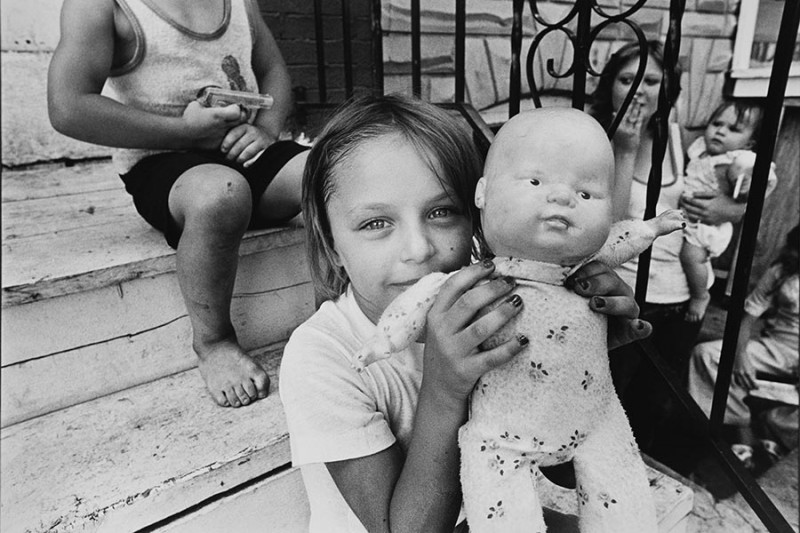
Image credit: Jennifer Bishop
The girl and doll caught my eye first—I thought they resembled each other, their big heads, the girl's luminous eyes and the doll's strangely human gaze. I like any ambiguity about what's real. I used a flash on the camera to add light to their eyes. Highlighting the two of them, I played with fragments of other family members in the frame to hint at a small drama. The girl holds her doll, while a real baby is held by a real mom, half a sister appears, and a brother with a toy gun. The real mom's hand to mouth—like a moment of surprise—adds tension to the boy's gun. He's very young but has cartoonlike arm muscles, and I like the way his toes curl under. I also like the girl's nail polish, the heart-shaped wrought iron over the doll's head, how the mom's eye is caught inside the heart … so many details that keep this photo alive for me 36 years later.
More photos by Jennifer Bishop
Coos Hamburger
My first camera was a little plastic bluish-gray thing—a present when I was probably 5 years old. A friend of my grandparents gave it to me, and I was delighted. I took some pictures and I thought this was a magical device. Then we left it in the glove compartment of the car to keep it safe and came back and found this melted blob. I was absolutely devastated. My first "real" camera was a Pentax Spotmatic, which would have been maybe circa 1973 or '74. Though the tool was different, that special magic of freezing time was still there.

Image credit: Jennifer Bishop
I would see pictures in the newspaper from the Vietnam War, and I was struck by the impact that those images could have, the fact that people reacted to those images. That concept of using a photograph to provoke reaction that would then evolve into changing something—that made an impression on me.
When people look at my documentary work, I would hope they walk away with the understanding that the image they are seeing genuinely reflects the scene or the experience as I saw it at the time. And through the telling of that truth, their reaction may elicit something within them to do something about the situation, to understand the situation further, or to have a greater appreciation for what it meant at that moment.
To be able to witness and document medical history is an amazing thing. I want people to look at the images and take a moment to reflect and say, "Goodness, this is amazing. Look at what medicine can do." Photography has the power to do that.
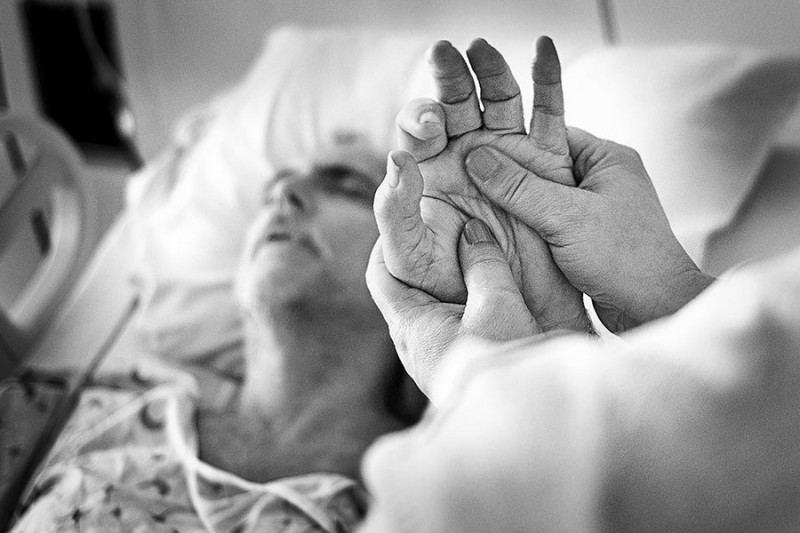
Image credit: Coos Hamburger
On its surface, this image depicts a severely ill patient receiving acupressure therapy from an integrative care nurse. On a deeper level, it captures the potency of simple touch to ease a depth of suffering and soften the sear of pain. Even in the most high-tech critical care environment, the focus on the human interaction, caregiver and patient, is the essence of healing. This picture defines what I seek through my photography. It translates a transcendent moment into a lingering image. The narrative of that image must convey the dignity of the person—I am constantly trying to define the line between witness and voyeur. In the end, the making of the picture must answer to the question: "Was it the right thing to do?" The photographs should stir conversation, between patients, families and caregivers, friends and strangers. My camera is more than a tool to capture light. It is my passport into the worlds of others. Through it, I am given the gift of their intimacy and trust. Especially in my medical documentary work, there is sacredness and responsibility in accepting that gift. If the viewer is left a bit more compassionate, more empathetic, more aware of the frailty and beauty of life, then maybe that gift will have enriched. Maybe, it too, in its own artistic way, helped heal.
More photos by Coos Hamburger
Joe Rubino
I walk and shoot. It's street photography. I'm interested in composition, I'm interested in color, and I'm interested in light. And I love going out there and looking for it, you know?
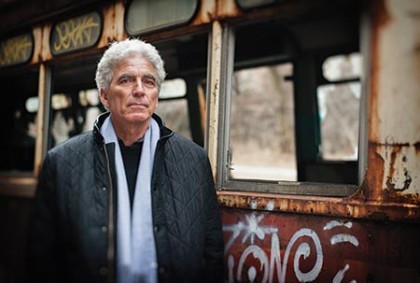
Image credit: Coos Hamburger
When I was a graduate student at Hopkins, I got a Nikkormat and I tried, but I was very frustrated because I couldn't get what I wanted. So I set it aside. I got out of Hopkins and I went to work at Hopkins Hospital because I was interested in psychology. Then I worked construction for two years. I was trying to write, but I just didn't know what I wanted to do. Then I ended up getting a job at the Baltimore Red Cross, and they wanted me to be a photographer. That was in 1977, and as soon as I started to do it, I just loved it.
I spent 20 years learning how to see, which was the hardest part of photography for me. And when I say learning how to see, it's what's actually in that frame. It wasn't a natural thing for me. It was hard and painful and it took a long, long time. What I thought I was seeing and what ended up in the frame were two very different things.
What I became interested in six or seven years ago was slow shutter speed, leaving the shutter open for a long time. I'm interested in blur.
I love the pursuit. Of being out there and trying to get something beautiful.
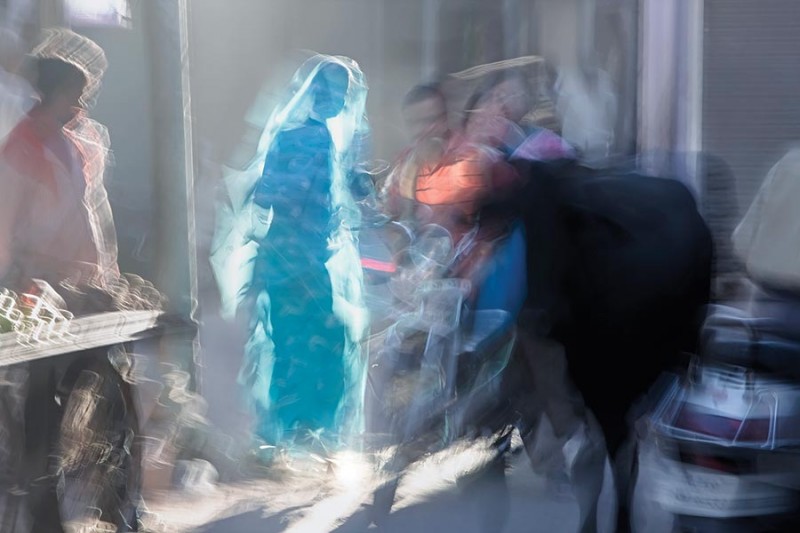
Image credit: Joe Rubino
This photograph was shot on Christmas Eve a few years ago in Jodhpur, Rajasthan. As is the case throughout India, Jodhpur contains within its walls the ancient and the new, the vulgar and the enchanted, the horrible and the exquisite. For the photographer with a romantic disposition, there are sufficient opportunities to capture the beautiful and the exotic, keeping out of the frame any traces of modernity. But what interests me are the collisions of the immense contradictory forces that can be seen, felt, and experienced everywhere in India.
More photos by Joe Rubino
Posted in Arts+Culture
Tagged photography




